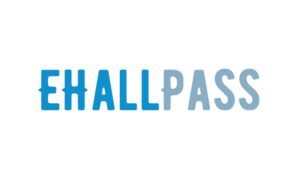The e-Hall Pass, also sometimes known as the electronic hall pass, has become an increasingly common sight in many schools. But what exactly is an e-Hall Pass and what purpose does it serve?
An e-Hall Pass is a digital system that allows teachers and school staff to track students any time they leave the classroom. It generally consists of an electronic device or card that students carry with them, which they must scan or check in and out with whenever they enter or exit a classroom. This allows school personnel to monitor where students are at all times.

There are a few key purposes and benefits of using an e-Hall Pass system:
- Improved Security – With an e-Hall Pass system, there is always a digital record of which students have left the classroom, where they went, and when they returned. This improves monitoring and security in case of an emergency or lockdown situation. Teachers and staff can easily track missing students or account for all individuals.
- Increased Accountability – Students must properly check in and out with their pass, limiting the potential for them to skip class or wander halls without permission. It promotes discipline and accountability for one’s whereabouts and time. Support staff can also easily generate student reports.
- More Order & Autonomy – The passes allow students more freedom and autonomy to use the bathroom, go to the nurse/counselor/office, or access resource rooms independently while still providing school staff oversight through the digital check-in system. This promotes student independence and self-monitoring.
- Data & Insights – School administrators and support staff can use the data collected from e-Hall Passes to gain useful insights. For example, they may identify when and where hall traffic seems most congested to adjust schedules or staffing accordingly. Trends around nurse/bathroom visits may also inform health programs.
Despite their benefits, there are some criticisms of e-Hall Pass systems as well. Detractors argue they can undermine trust between teachers and students, provide too much monitoring, or present hygiene concerns with shared passes spreading illness. However, many schools ultimately find the security and accountability benefits worthwhile.
FAQs
Students carry an electronic device or card that they must scan or check in and out with at control points whenever they exit or re-enter a classroom. This provides digital tracking of student whereabouts.
No, for security reasons, e-Hall Passes are individually assigned to each student, and sharing them is prohibited. Audit logs would identify any shared use.
While used most often for monitoring and analysis, student hall pass activity could be used punitively if rules around proper check-in/out are ignored. As with any school policy, compliance is expected.
Yes, teachers must provide permission before a student may leave the classroom with their e-Hall Pass to use the bathroom or access another resource. The passes provide oversight once outside.
Conclusion
In summary, e-Hall Passes serve important purposes like improving school security, increasing student accountability, providing more autonomy paired with oversight, and supplying administrators with usage insights. As with any system, there are pros and cons, but overall the passes deliver valuable benefits that explain their expanding usage in schools today. A well-designed system used responsibly can enhance safety and order for students and staff alike.